Joseph Pilates believed he had created an exercise programme that would stand the test of time and contribute to the wellbeing of anyone who practised it seriously. And while Pilates continues to grow in popularity 55 years after his death, many of its devotees are far from content, as they quarrel over his legacy.
The fight started on social media more than a year ago and has since moved to the US federal court. At issue is who has the right to share certain vintage photographs of the barrel-chested Pilates, who died in 1967 at 83 years old, as well as key materials related to his highly specific teachings.
On one side of the dispute is Sean P Gallagher, a physical therapist who runs a Pilates teacher training business. He says he is the rightful owner of the copyright to more than 1,000 photographs that once belonged to Pilates and his wife, Clara, as well as a trove of flyers, manuscripts, 8mm films and other materials. Gallagher’s supporters describe him as a careful steward of the Pilates founder’s teachings and public image.
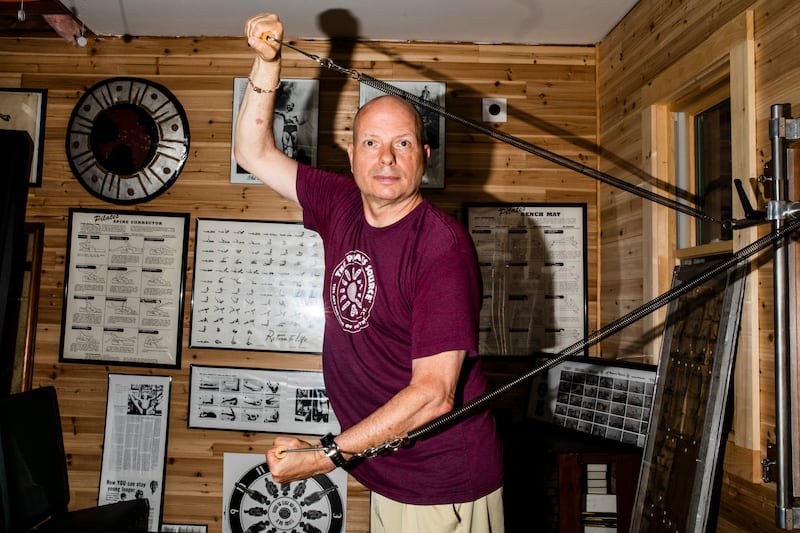
His opponents include Pilates instructors who say that 64-year-old Gallagher has unfairly stemmed the flow of Pilates-related materials, much of which can be found online, by lodging complaints about their posting images on social media and threatening or filing lawsuits. In some cases, Meta, the parent company of Instagram and Facebook, has shut down the Instagram accounts of people who have been the subjects of Gallagher’s complaints.
READ MORE
Heather Erdmann, a Pilates instructor and studio owner in Houston, was one of the people whose Instagram accounts were taken down. She said she wanted to share pictures of Pilates in action with her followers because there was no substitute for showing how the method’s founder executed his moves. “How he put his hand and where he put his foot and where he was looking are very important details to us,” Erdmann says.
In February, Gallagher filed a copyright infringement and unfair competition lawsuit against Mary Sullivan Kelly, the owner of True Pilates Boston, a studio in Newton, Massachusetts, claiming that she had used materials owned by him and his company, Richtone Design Group, to market her business without his permission. He cited two images shared by Kelly on social media. Kelly, who declined to comment for this article, filed a countersuit, arguing that Gallagher did not hold the copyrights to the photographs in question. Both lawsuits are pending.
I’m trying to keep Joe’s dream alive
— Sean Gallagher
Kelly’s supporters have raised nearly $60,000 (€61,258) on the fundraising platform GoFundMe to help with her legal costs. In asking for donations, the Pilates instructors and students who organised the fundraising effort said that “the simple act of sharing vintage Pilates photographs and materials – all of them widely seen and shared in the past – is under attack”.
Gallagher, who started practising Pilates in the late 1980s, says he sees himself as a protector of Pilates’ legacy. “I’m trying to keep Joe’s dream alive,” he says.
The rift in the Pilates community reflects a seeming contradiction in Pilates’ character. He was an exacting teacher who demanded that his students follow his instructions with precision. And yet he wanted his system, which he called Contrology, to spread far and wide.
A spiritual godfather to the fitness enthusiasts who chronicle their workouts on social media, Pilates posed for countless photographs as he went through his routines. Other pictures showed him outside the gym, like one in which he appears with his wife at his side, standing on his skis. Such images circulated among Pilates adherents for decades. During the pandemic’s shutdown months, when fitness communities moved online, the photos were shared more widely.
Pilates grew up in a small town near Düsseldorf, Germany, where he developed an interest in gymnastics, says Cathy Strack, a Pilates instructor and the author of Get to Know Joe Pilates. Around 1913, he left Germany for England, where he worked as a circus performer and started to create his own exercise method.
At the outbreak of the first World War, he was interned on the Isle of Man with other German citizens. During his four years in the camp, he taught others his routines, which he had based in part on his study of gymnastics and his observations of animals.
Eat what you want, drink what you want. I drink a quart of liquor a day, plus some beers, and smoke maybe 15 cigars
— Joseph Pilates
He immigrated to New York in 1926 and opened a studio with his wife at 939 Eighth Ave. in Manhattan. It was small, about 15 by 20ft, and it included some of the apparatuses (among them the reformer and the guillotine) designed by Pilates for his method.
Before a session, students would change into uniforms – leotards for women; form-fitting trunks and no shirts for men. Then they would silently go through the repetitive routines, which were meant to strengthen muscles without exhausting them, under Pilates’ close attention. His students are said to have included dancers George Balanchine, Jerome Robbins, Suzanne Farrell and Ron Fletcher, as well as actors Katharine Hepburn, Laurence Olivier and Lauren Bacall.
In a 1945 book, Return to Life Through Contrology, Pilates laid out exercises including the Swan-Dive and the Scissors that can be done without the use of an apparatus. Each is illustrated with a series of photos of a shirtless Pilates in his snug trunks. The text includes commands on when to inhale and exhale and how to hold your head and gaze.
“Follow instructions exactly as indicated down to the very smallest details,” he wrote. “There IS a reason!”
He promoted his core-strengthening programme as a kind of cure-all. “By exercising your stomach muscles, you wring out the body,” he said in a 1964 interview with The New York Herald-Tribune. “You don’t catch colds; you don’t get cancer; you don’t get hernias. Do animals get hernias? Do animals go on diets? Eat what you want, drink what you want. I drink a quart of liquor a day, plus some beers, and smoke maybe 15 cigars.”
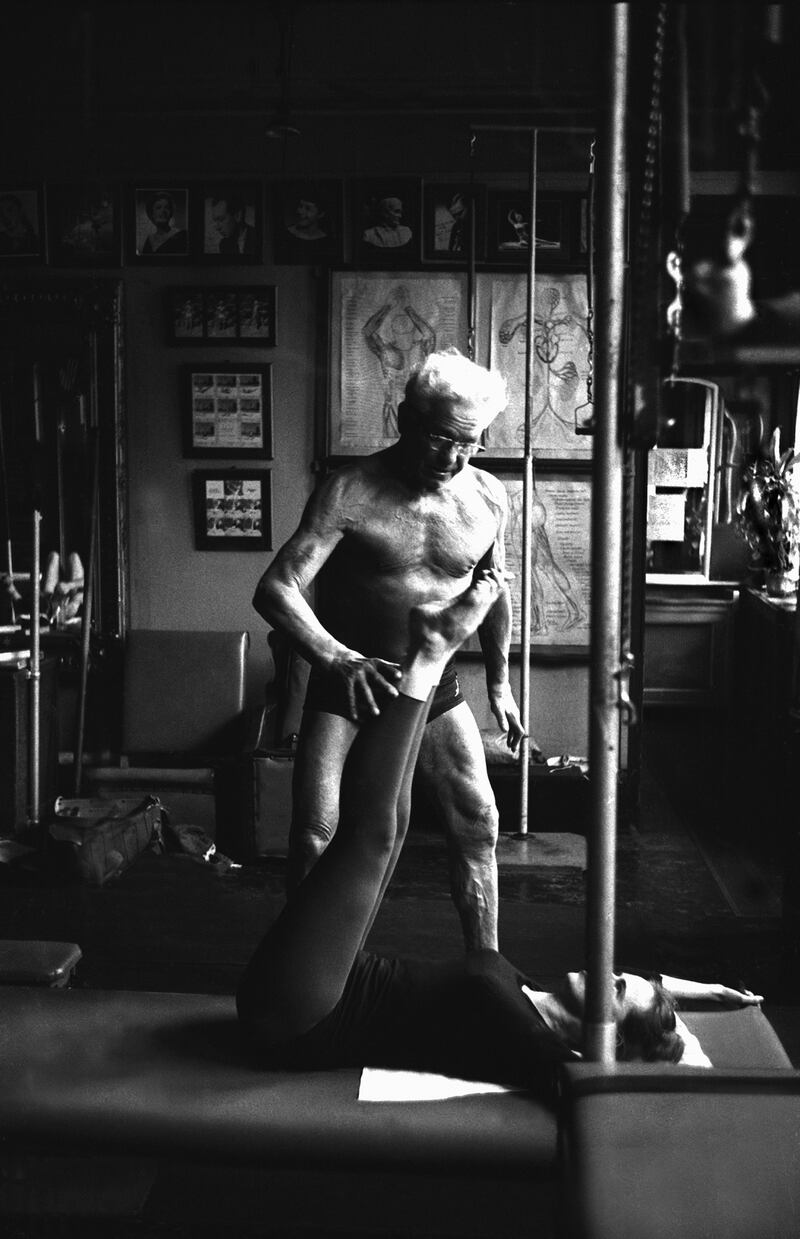
The day after his death in 1967, the obituary published in The New York Times described him as a “white-maned lion of a man” who “kept as limber in his 80s as a teenager”. The studio went on without him, run for a time by his widow. In 1972, one of his former students, Romana Kryzanowska, who had been a ballerina under Balanchine, came aboard as the main instructor and part owner.
Clara Pilates died in 1977. In 1984, as the studio was about to go under, Lari Stanton, a client, swooped in. His family business, glove company Aris Isotoner, bought the operation for $100,000, and Kryzanowska stayed on as an employee. Two years later, Isotoner sold the studio to one of its instructors, Wee-Tai Hom, for $15,000. About two years later, Hom shut down the studio.
Kryzanowska went on to teach Pilates at the Gym, also known as Drago’s, a fitness emporium on West 57th Street. Gallagher connected with her and together they started a teacher training programme. Kryzanowska handled the students and he focused on business. Graduates identified themselves as certified Pilates instructors.
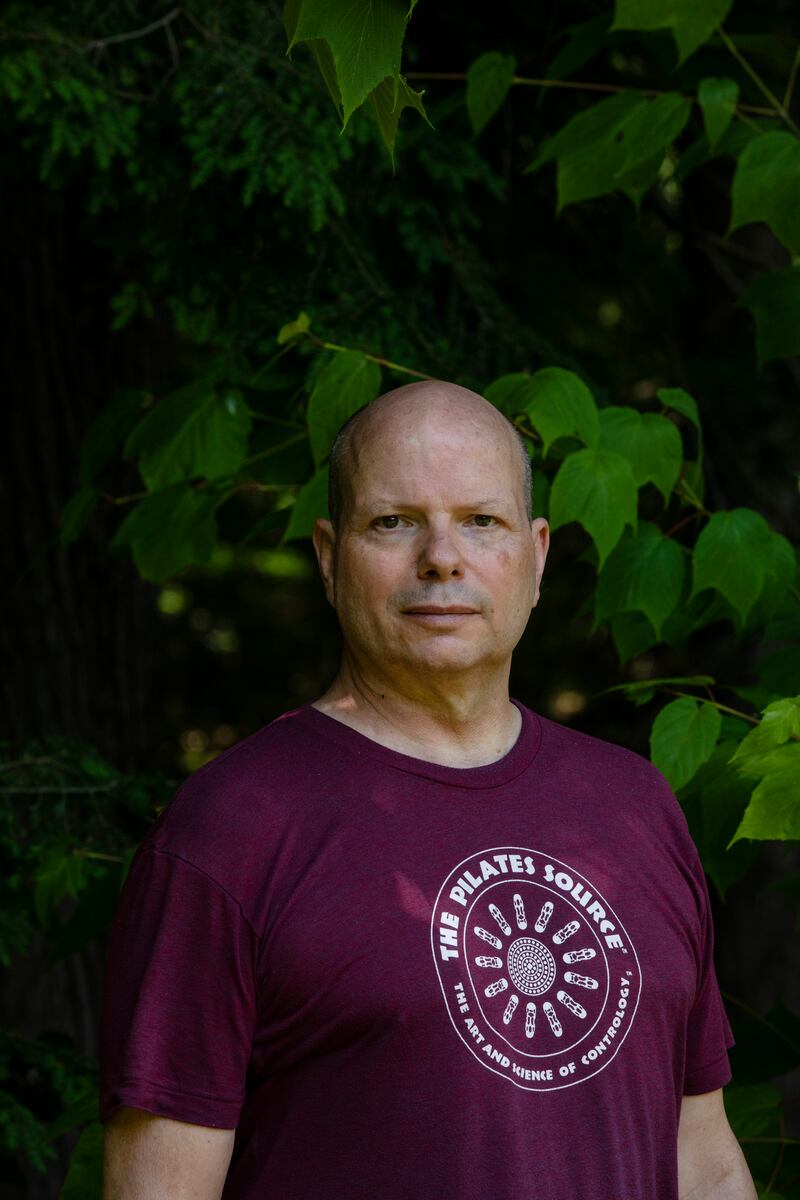
In 1992, Gallagher bought the trademarks for the exercise method and the Pilates brand name for the studios from Hom’s company for $17,000. As part of the deal, Gallagher said he received 10 to 15 boxes containing the more than 1,000 photographs and other materials. Gallagher said he believes that Joseph and Clara Pilates had taken many of the photographs. After the deal, Gallagher applied for and received a registered trademark for Pilates-branded exercise equipment.
Through the 1990s, Pilates continued to spread. In Los Angeles, one of Pilates’ students, Fletcher, introduced his adaptation to Hollywood clients. Others who had studied under the founder taught in New York, including former ballerina Carola Trier and Kathy Grant, who ran a Pilates studio that had been started by Pilates on the sixth floor of the Henri Bendel department store.
At the same time Gallagher sent cease and desist letters to businesses and instructors using the word “Pilates”. In 1996, he filed a trademark lawsuit against Current Concepts (now called Balanced Body, Inc), a manufacturer of Pilates equipment in Sacramento, California, owned by Ken Endelman, a former waterbed maker.
If you’re my competitor, I’m not necessarily going to allow you to use my stuff to compete against me
— Sean Gallagher
The suit went to federal court in the US Southern District of New York in 1998. The judge was Miriam Goldman Cedarbaum, a mentor to supreme court justice Sonia Sotomayor. The question to be settled was whether Endelman’s company and others had the right to use the word “Pilates” to describe their businesses or if it was a validly trademarked term owned by Gallagher.
In 2000, Cedarbaum ruled that “Pilates” was a generic term, like “yoga” or “aerobics”. The decision meant that it could be used by any business owner. In her ruling, the judge noted that Gallagher had obtained the trademark that covered the equipment business “through fraud”.
[ From posture to Pilates: dealing with the root causes of painOpens in new window ]
The spread of Pilates accelerated. As of 2022, there were more than 40,000 Pilates and yoga businesses across the United States, according to market research firm IBISWorld, an increase of nearly 5 per cent more than the previous year.
The current battle comes as a sequel of sorts to the trademark case. This time around, Gallagher is trying to stop Pilates instructors from digitally sharing the images to which he says he owns the copyright. Some of the pictures, taken from the boxes of materials he acquired in 1992, became accessible to Pilates enthusiasts after they appeared in The Joseph H Pilates Archive Collection, a book Gallagher published in 2000. Others had been circulated by the Pilates’s and their students.
We don’t want to be afraid to do something as simple as sharing a picture
— Hila Paldi
Gallagher offers a reason for his attempts to prevent others in the Pilates community from sharing the photos online: “If you’re my competitor, I’m not necessarily going to allow you to use my stuff to compete against me.” His opponents say that they have not shared the images to market their businesses, but to educate people about “classical Pilates”, a term used to indicate the method as Pilates himself taught it.
[ Yoga v pilates: which one is best for you?Opens in new window ]
Hila Paldi, a 64-year-old Pilates teacher in New York, says her Instagram account was shut down last year after Gallagher complained about posts that included photos of Pilates. Paldi says she received the pictures in question from Kryzanowska and another of the founder’s students, Grant.
“We don’t want to be afraid to do something as simple as sharing a picture,” says Paldi, who adds that she was “not a competitor of Sean Gallagher’s”.
A Meta spokeswoman declined to comment on the specifics of the flagged posts and deleted accounts described in this article.
If you don’t have a presence on Instagram and Facebook in the world of fitness, what good are you?
— Ken Endelman
Victoria Batha Cuomo, who teaches Pilates in New York City and Montauk, in New York, is another instructor at odds with Gallagher. Last year she posted an image on her Instagram account, the Pilates Snob, of a contact sheet showing Pilates demonstrating his moves. The next day, she says, Instagram informed her that a report had been filed by Gallagher accusing her of copyright infringement.
The company removed her post. When she then shared a screenshot of the notice from Instagram that included a thumbnail rendering of the flagged image, Gallagher reported her to Instagram again. The social network removed that post, too.
Cuomo then started an online project, Pilates History Month, to share information about Pilates. Last autumn, she conducted an interview on Instagram Live with Endelman, the defendant in Gallagher’s failed 1996 lawsuit. They discussed the case, as well as a flyer created by Pilates in 1943 that showed a woman demonstrating his Around the Clock exercise. Cuomo found an image of the flyer online and posted a screenshot.
[ ‘Pilates made me more aware of how my body works’Opens in new window ]
About a month later, she says, she received a notice from Instagram that Gallagher had reported her again, and Instagram permanently shut down her account.
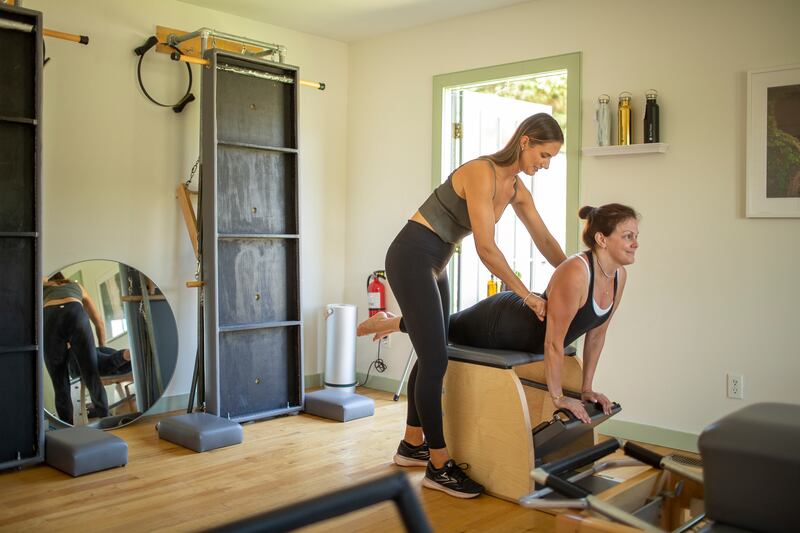
“If you don’t have a presence on Instagram and Facebook in the world of fitness,” she says, “what good are you?”
Erdmann, the Pilates instructor and studio owner in Houston, says she was unaware of the disputes when she went to the New York Public Library last year to see Trier’s archive of Pilates-related materials. After the visit, she posted on Instagram 10 black-and-white photos that she had taken of a booklet that showed Pilates demonstrating exercises on the Wunda Chair, one of his apparatuses. “It’s the only chair purposefully designed to pleasantly ‘correct’ your present deplorable physical condition,” the booklet says.
It’s really a strange and violating feeling to be erased like that
— Ken Endelman
Erdmann says she was aware of notices in the library informing visitors that it did not hold the copyright to all the materials it housed. But she thought the booklet was in the public domain, she said.
After sharing the images, she said she received a notice from Instagram that Gallagher had reported her. The social media company took down her account, she said. Because of the removal, she says she lost most of her correspondence with her clients, many of them National Football League players who contacted her only through Instagram. “It’s really a strange and violating feeling to be erased like that,” Erdmann says.
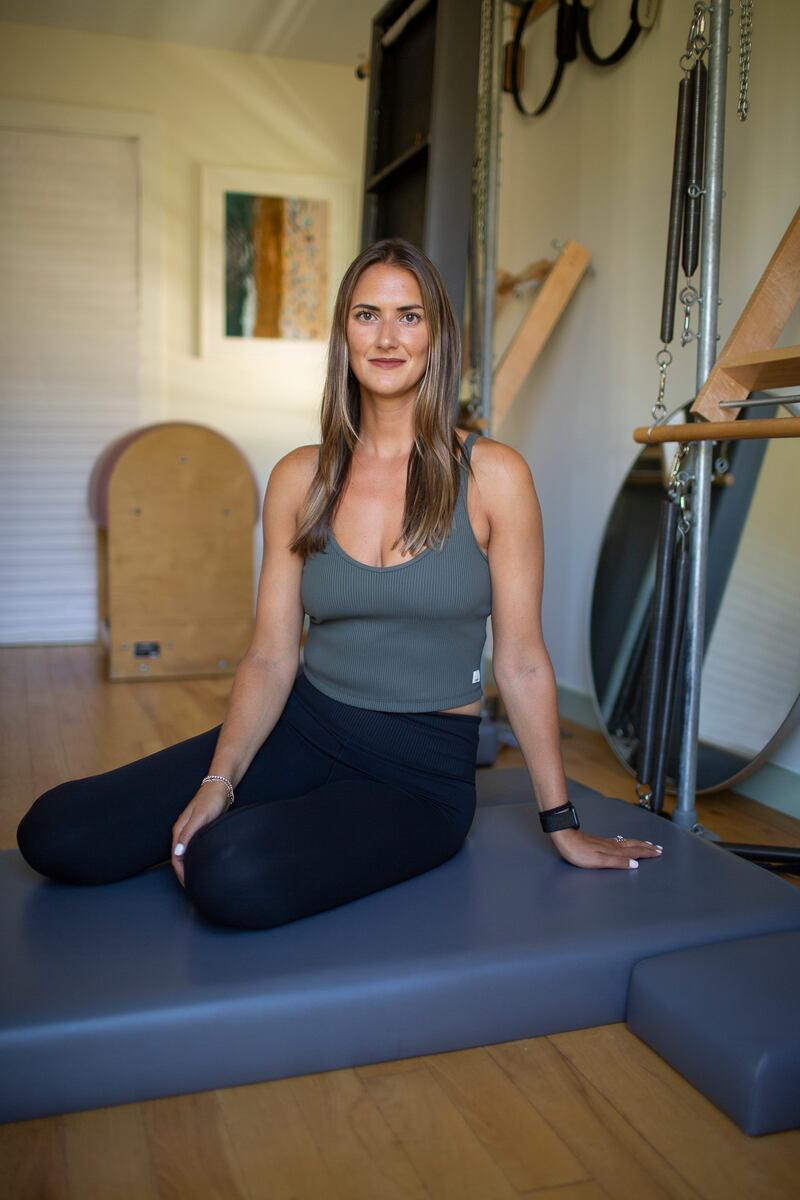
Last autumn, Christina Gadar, a Pilates instructor in Sarasota, Florida, planned to post on Instagram a photo that showed her re-creating Pilates’ Around the Clock flyer. Because she knew of Gallagher’s disagreements with other Pilates instructors, she informed him of her plan in an email, she says.
He replied that she was not allowed to post an image inspired by the vintage flyer unless she entered into a licensing agreement with him, she says. She replied that she would do so if he provided her with proof that he held the copyright to the flyer, she says. That is where the correspondence came to an end.
It felt like petty harassment
— Christina Gadar
Gallagher says he had not registered a copyright for the Around the Clock flyer, but says he has possession of the plate it was printed from, which he believes makes him the copyright holder.
Soon after her exchange with Gallagher, 47-year-old Gadar received notice from Instagram that three of her older posts had been flagged by him as copyright violations. One of them showed the cover of Gallagher’s book, which, Gadar told her followers, was one of her favourite Pilates resources. Instagram removed those posts.
“It felt like petty harassment,” Gadar says.
Unbowed, she made an Instagram video of herself in a vintage leotard as she did the moves shown in the Around the Clock flyer. Each day since then, for more than a year, she has posted a video of herself demonstrating Pilates exercises. Gallagher says he is considering suing Gadar for violating his copyright to Pilates’ choreography.
“In that case, he would need to sue everyone on the internet doing Pilates,” Gadar says.
[ Is Pilates really as good as everyone who does Pilates says it is?Opens in new window ]
So far, Gallagher has sued only Kelly of True Pilates Boston, who had two Instagram accounts taken down after her posts were flagged by Gallagher.
When she was notified by Meta that the second of her accounts had been removed, she clicked the box to indicate that she questioned the validity of his copyright claim. Gallagher says Meta notified him that it would restore Kelly’s account unless he took legal action to assert his ownership of the images she had posted. That is when he sued her.
Her account remained closed after he filed the lawsuit. Kelly is being represented by Gordon Troy and Lawrence Stanley, who successfully defended Endelman against Gallagher’s claims more than two decades ago.
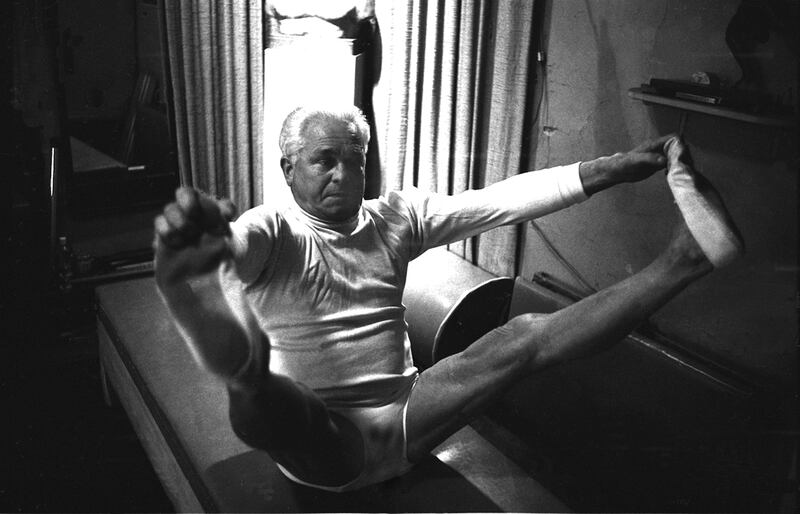
As the suit filed by Gallagher and the countersuit filed by Kelly move toward a trial date, Gallagher has been trying to build a Pilates centre on a property in the Berkshires that was once owned by Joseph and Clara Pilates, which he bought for about $120,000 in 1998. The compound’s studio has pieces of vintage Pilates equipment on display, as well as Pilates’ long wooden skis. Gallagher has been assisted in his renovation of the property by Pilates instructors who travel there for so-called “volunteer days”.
He wanted the whole world to do Contrology and certainly wanted to use photography to help facilitate that
— John Howard Steel
With Elaine Ewing, an instructor and studio owner from Rhinebeck, New York, Gallagher hosts seminars, called Pilates at the Pillow, at Jacob’s Pillow, a dance centre in the Berkshires where Pilates once worked with ballerinas. Gallagher’s business also includes his Etsy shop, where he sells greeting cards that show a shirtless Pilates on his skis, posters and other Pilates-related items.
At a volunteer day this summer, Gallagher was joined by a group of Pilates instructors. Kathy Porcell, owner of Elevation Pilates in Glens Falls, New York, was helping file documents that Gallagher said he was organising in preparation for the discovery phase of litigation. “It’s super-motivating to be around the history,” Porcell said. “I feel so close to the source of it all.”
It’s hard to know what Pilates himself would make of the disputes over his life’s work.
“He wanted the whole world to do Contrology and certainly wanted to use photography to help facilitate that,” says 87-year-old John Howard Steel, one of the founder’s students and the author of Caged Lion: Joseph Pilates and His Legacy. “But he also tried to keep a tight grip on his work.” – This article originally appeared in The New York Times











